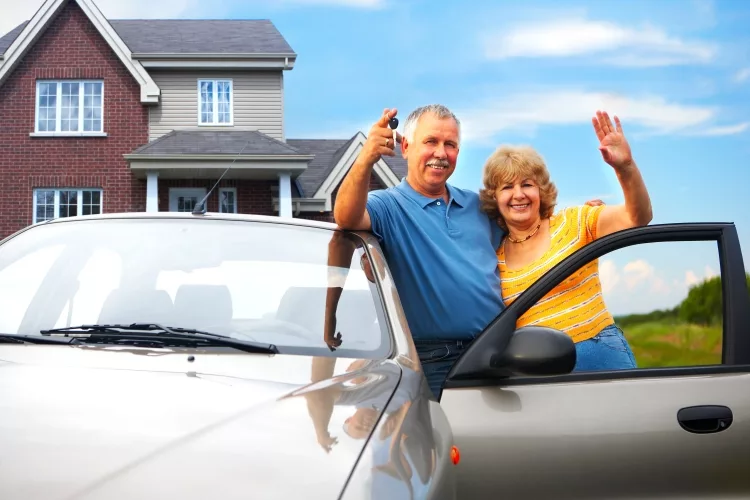by Mike Constanza
The car needs to go at a speed of 80 miles per hour. Kinetic energy is proportional to the square of the velocity, so as you double your velocity, kinetic energy increases by a factor of four.
If you want to triple your kinetic energy, then you need to increase your speed by an additional two-thirds. To quadruple it, increase your speed by three-quarters and so on.
In order to double the kinetic energy of a car, it would need to go from 30 mph up to 60 mph. The reason why is because when a car reaches a certain velocity, all of its movement will be in one direction and it can't move at another angle.
Contents
To put this into perspective, if you were driving down the road going 25 miles per hour and then hit 60 MPH, your speed would increase by 35 miles per hour.
It's a question that has been pondered since the dawn of the automobile. How fast would my car need to go before it doubled its kinetic energy? What about triple, quadruple, quintuple.
The truth is, if you are driving on an open highway at 100 MPH then your car will have 2 times more kinetic energy than when it started. Just imagine what could happen if we drove our cars at 150 mph. It can't be good for us or our environment.

A car is traveling at 10m/s. If it continues this way, how long will it take to reach 100km?
You're coming up to a red light and you see the car in front of you slow down, but then it speeds up again. You wonder what's going on because that doesn't seem like the best way to stop at a red light.
Your brain is trying to figure out whether or not this person has some sort of mental disorder, when they turn into your lane just as the light turns green. This blog post will cover why people drive so fast around lights and how drivers react differently depending on where they are from.
A car is traveling at 10m/s and it's headed straight for you. You can't move out of the way, so what do you do? The answer may surprise you - just close your eyes! In a study by the University of Iowa, researchers found that people who were hit by a car while crossing the street had a better survival rate if they closed their eyes than those who tried to dodge or jump out of the way.
The reason being is because closing one's eyes minimizes distractions and decreases reaction time. If this doesn't work for you, try playing dead - as soon as possible after impact roll on to your back with arms extended along your sides and palms up. This position will also lessen injury from broken glass.
A car that is going at a rate of 50 mph needs to go for 5 hours before it will have gone 1,000 miles. The same car going at a rate of 60 mph needs to go for 4 hours. More speed equals less time needed to reach the destination!
The car needs to go at least 100 mph in order to get from Point A to Point B within a reasonable amount of time. This can be accomplished by going faster on highways, but there is a risk that the car will exceed its speed limit and get pulled over by the police. The best way for a driver to avoid this situation is by staying off highways and sticking with surface streets.
I was driving my car on the highway when I noticed a new type of car with a different engine. It had an electric motor and battery pack on it so I decided to do some research and found out that this is what all cars will be in 2020.
These cars are much more efficient than gas powered cars because they only use about 30% of the electricity that our current cars use while still getting just as many miles per gallon. The best part about these new types of engines is that we can charge them at home like we currently charge our phones.
The car is accelerating at the same rate, but the speedometer reads twice as high. -What does this mean for your engine? Your transmission? Your tires? -The increased speed will make your engine work harder to produce enough power. The faster you go, the more fuel you consume and the greater chance of mechanical failure.
"Driving at the legal speed limit is not always enough. If you are driving in a crowded city, or on a highway with lots of traffic around you, driving slower will only make your commute even more frustrating." "But what about when you are driving in less congested areas? Is it worth doubling the speed limit to save time? It really depends on how much time is saved, but for some people who have long commutes every day it can be worth speeding up!"
A car that is going at a rate of 8.0 kg needs to go for 5 hours before it will have gone 1,000 miles. The same car going at a rate of 60 mph needs to go for 4 hours. More speed equals less time needed to reach the destination.

About Mike Constanza
For years, Mike had always told everyone "no other sport like baseball." True to his word, he keeps diligently collecting baseball-related stuff: cards, hats, jerseys, photos, signatures, hangers, shorts (you name it); especially anything related to the legendary player Jim Bouton.
Mike honorably received Bachelor of Science degree in Business Administration from University of Phoenix. In his graduation speech, he went on and on about baseball... until his best friend, James, signaled him to shut it.
He then worked for a domain registrar in Phoenix, AZ; speciallizng in auction services. One day at work, he saw the site JimBouton.com pop on the for-sale list. Mike held his breath until decided to blow all of his savings for it.
Here we are; the site is where Mike expresses passion to the world. And certainly, he would try diversing it to various areas rather than just baseball.
 |
 |
 |
 |
Today's Deals